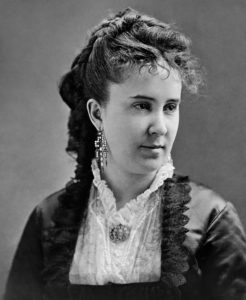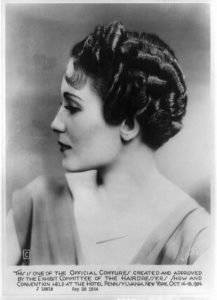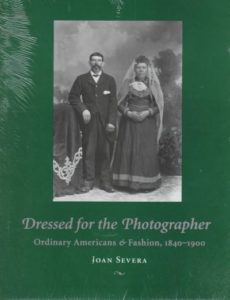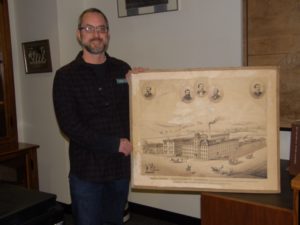

Fashion
My family consists of a wife and two daughters, so I am more fashion-conscious than I would like to be. On any normal day, I am exposed to conversations about which stores have the best clothes, whether or not it is time to shake up a hair or clothing style, and if it is okay to wear a jeans jacket with jeans if they are both blue (the strong consensus is not!). And I have been subjected to seemingly endless episodes of Project Runway, What Not to Wear, and Queer Eye during family TV time.
If I had my druthers, I would probably end up dressing every day in a t-shirt picked up in a brewpub or an old sweatshirt from my college days. But I feel the pressure to up my fashion game at least a little when I am out with my family so that people don’t look at us and think, “Wow, those three women look great, but why are they hanging out with that slob?”
But when I reflect on how fashion changes over time and consequently has a history, now I’m interested! Theoretically, fashion is supposedly an expression of individuality, yet it ironically follows a collective pattern that changes over time and forms what we call fashion trends. Nowadays, we tend to categorize fashion trends by decades: we can all recognize the hippie styles of the ‘60’s, the bell-bottomed pants and wild prints of the ‘70’s, the broad shoulder pads of the ‘80’s, . . . need I go on?
And even when “decade fashions” cycle back and are in vogue again, stylistic differences tied to the present tend to dominate. When the ‘90’s look came back in fashion a few years ago I pulled out my old Eddie Bauer flannel shirt that I keep in my closet out of nostalgia for my grunge days and thought I’d give it a try. But immediately after putting it on, it went right back in the closet because it was so oversized that I would have looked ridiculous wearing it, even though it was authentically retro. Apparently, saving that outfit for when it comes back in fashion just doesn’t work.
Fashion connects to our daily habits, which becomes more apparent as we go back in time. Today we chuckle at how everyone used to dress up whenever they made a trip into town to go shopping. Such a practice wasn’t just confined to cities; it was prevalent even here in Westborough! We marvel at the hoop skirts that women commonly wore in the nineteenth century—and think about the effort needed simply to fit into them, let alone the widened hallways in period hotels to accommodate their width. And we begin to sweat while just imagining soldiers from the American Civil War having to march in their heavy wool uniforms in the Southern summer heat. The sacrifices we make for fashion!
I recently attended a Zoom seminar on how to date historic photographs when they do not have a date or caption (although, as we learned, captions can be notoriously wrong). Given my discussion above, it will come as no surprise that fashion is one of the clues we can use to assign a date to a photograph. Sears catalogs, it turns out, can be especially useful for dating twentieth-century photographs since so many people relied on them to obtain everyday items, including clothing (see below for access information).
Do you have any family photographs that need dating or more identification? I have recently added several books to the Westborough Center’s circulating collection on how to use fashion and hair styles to date and identify photographs to help you out (see the list below). So even if we need to curtail family gatherings as a result of the pandemic this holiday season, maybe now is the time to “visit” some old family members through their photographs, do some detective work, and take an historical look at fashions past—and extra credit goes to anyone who can reproduce any of the elaborate hairstyles depicted in the books!
–Anthony Vaver, Local History Librarian
* * *
Photographs have a better chance of being dated and identified if you first make a list of clues that follow the “Who? What? Where? When? and Why?” in the image. Here are some more specific questions to ask:
- Who is in the photograph?
- Who owned the photograph?
- What is happening in the photograph?
- Where was the photograph taken?
- When was the photograph taken?
- Who was the photographer? If the photograph was taken professionally, when and where did the person who took it generally work?
- Why was the photograph taken? Why did the people pose in the way that they do?
- Why did your family member have this photograph in his or her collection?
- Why do you have the photograph in your collection?
- What kind of technology was used to create the photograph and when was it commonly used?
Answers to the above questions can help guide further research via family stories, genealogical research, or family networks.
Here are some newly added books in the Westborough Center’s circulating collection that can also help you out:
- Dressed for the Photographer: Ordinary Americans and Fashion, 1840-1900, by Joan Severa.
- An Illustrated History of Hairstyles, 1830-1930, by Marian I. Doyle.
- Hairstyles, 1840-1900, Includes Men, Children, and Unusual Coiffures, by Maureen A. Taylor.
- Cased Images and Tintypes Kwik Guide: A Guide to Identifying and Dating Daguerreotypes, Ambrotypes, and Tintypes, by Gary W. Clark.
Of course, one way to avoid this problem in the future is to add dates and labels to your current family photographs, which we generally do not do because we already know who is in the photograph and roughly when it was taken. But future family members, we have to remember, will not have the knowledge that we do!
* * *
Does dating your family’s historical photographs inspire you to dig deeper into your family’s history? Do you have a hunch about who might be in your family photograph, but need more supporting information?
The Westborough Public Library has some great online genealogical resources, and they are free to use! Here is a guide to our Online Genealogical Resources.
All of the listed online resources can be accessed from your home with a library card except for the Ancestry Library Edition, which can only be accessed while you are in the library. Note that the Ancestry Library Edition database also includes digitized copies of Sears, Roebuck, and Co. catalogs, from 1896-1993.
* * *
If you missed the article on the Westborough Center for History and Culture in the Community Advocate last week, you can read it here.
The article nicely summarizes the vision and goals that I have for the Westborough Center. If you have a question about Westborough and its history or an idea about enriching the culture of our town that you want to pursue, the Westborough Center is here to assist you. Feel free to e-mail me at avaver@cwmars.org.



This is such fascinating information! We never learned about fashion and hair styles (or other domestic details) in history class, and those topics would have really interested me. I am struck by how elaborate the hairstyles are, especially given the tools they had to create such styles were cumbersome and hard to use (i.e. curling irons one had to heat up on a stove or fireplace).
Your comment shows how much more can be done in learning about history–or even in defining what history should be all about. Thanks for sharing!